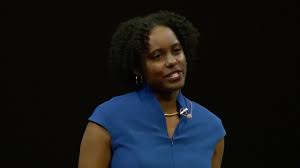In his thought-provoking TED talk, Paolo Gaudiano explores the common pitfalls of Diversity, Equity, and Inclusion (DEI) initiatives and offers insights on how to effectively implement these crucial concepts. Gaudiano challenges conventional approaches, arguing that many DEI strategies are flawed and emphasizes the need for a more nuanced understanding of what truly drives diversity and inclusion.
Understanding the Flaws in Traditional DEI Approaches
Gaudiano begins by examining the traditional frameworks surrounding DEI, which often focus on surface-level metrics and compliance rather than genuine cultural change. He argues that many organizations mistakenly believe that simply increasing diversity through hiring quotas or training programs will yield meaningful results. This oversimplification can lead to disillusionment and ultimately fails to create an inclusive environment.
Key Takeaways:
- Metrics Over Meaning:
- Many DEI initiatives focus too heavily on numerical diversity metrics, neglecting the importance of a meaningful cultural shift.
- Compliance vs. Commitment:
- A compliance-driven approach often results in minimal engagement, whereas a commitment to genuine inclusion fosters a more supportive environment.
- Focus on Power Dynamics:
- Understanding and addressing power dynamics within organizations is crucial for creating lasting change in DEI efforts.
Moving Beyond Quotas: The Need for Cultural Change
One of Gaudiano’s main arguments is that merely increasing representation is not enough. He emphasizes that true diversity and inclusion require a fundamental change in organizational culture, where every individual feels valued and empowered to contribute. This involves creating an environment that encourages open dialogue, mutual respect, and a shared commitment to inclusivity.
Key Takeaways:
Empowerment Over Representation:
- Prioritizing empowerment and cultural change is more effective than focusing solely on increasing representation through quotas.
Facilitating Open Dialogue:
- Creating spaces for honest conversations allows individuals to express their experiences and perspectives, fostering a more inclusive environment.
Engagement is Key:
- Engaging all employees in DEI initiatives, rather than relegating it to a specific group, enhances the likelihood of successful outcomes.
Recognizing and Addressing Power Dynamics
Gaudiano highlights the importance of understanding power dynamics in organizations. He argues that true DEI work requires acknowledging who holds power and influence, as this recognition can inform strategies for promoting equity. By addressing these dynamics, organizations can create a more equitable playing field where everyone’s voice matters.
Key Takeaways:
Power Awareness:
- Organizations must recognize existing power structures and how they impact diversity and inclusion efforts.
Equitable Participation:
- Ensuring that all voices are heard, especially those historically marginalized, is critical for fostering equity.
Strategic Action:
- DEI initiatives should be strategically designed to address the specific power dynamics within an organization.
Long-Term Commitment to DEI Initiatives
Finally, Gaudiano emphasizes that DEI is not a one-time effort but requires ongoing commitment and evolution. Organizations must be prepared to assess their strategies regularly and adapt to the changing landscape of diversity and inclusion. This long-term dedication can lead to transformative change and a culture of inclusivity.
Key Takeaways:
Ongoing Assessment:
- Regular evaluation of DEI initiatives is necessary to ensure they remain effective and relevant.
Adaptability:
- Organizations should be willing to adapt their strategies based on feedback and evolving social dynamics.
Sustained Effort:
- Long-term commitment to DEI is essential for creating and maintaining a truly inclusive culture.
Conclusion: A Call for Genuine Transformation
Paolo Gaudiano’s TED talk serves as a critical reminder that DEI work requires a comprehensive understanding of the nuances involved in fostering genuine inclusivity. By moving beyond superficial metrics, recognizing power dynamics, and committing to long-term cultural change, organizations can create environments where diversity thrives and all individuals feel empowered to contribute.






























